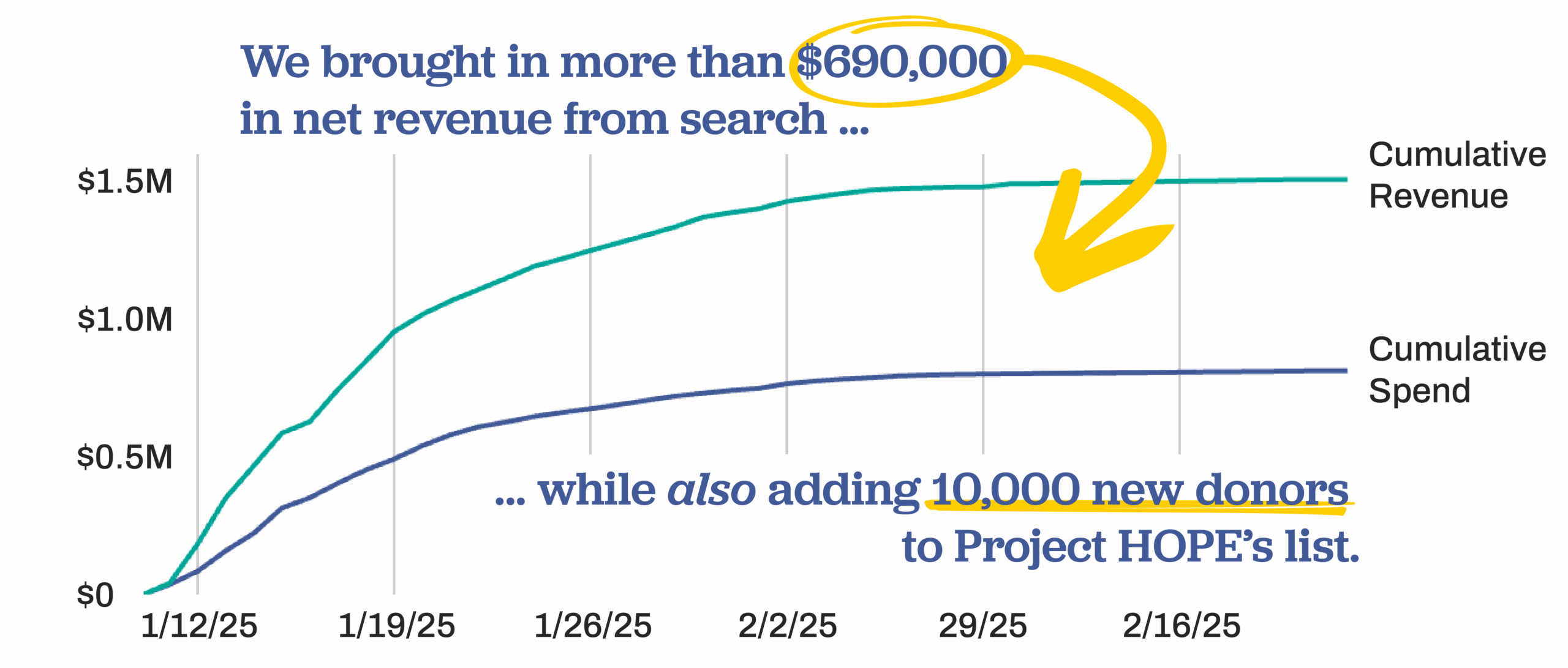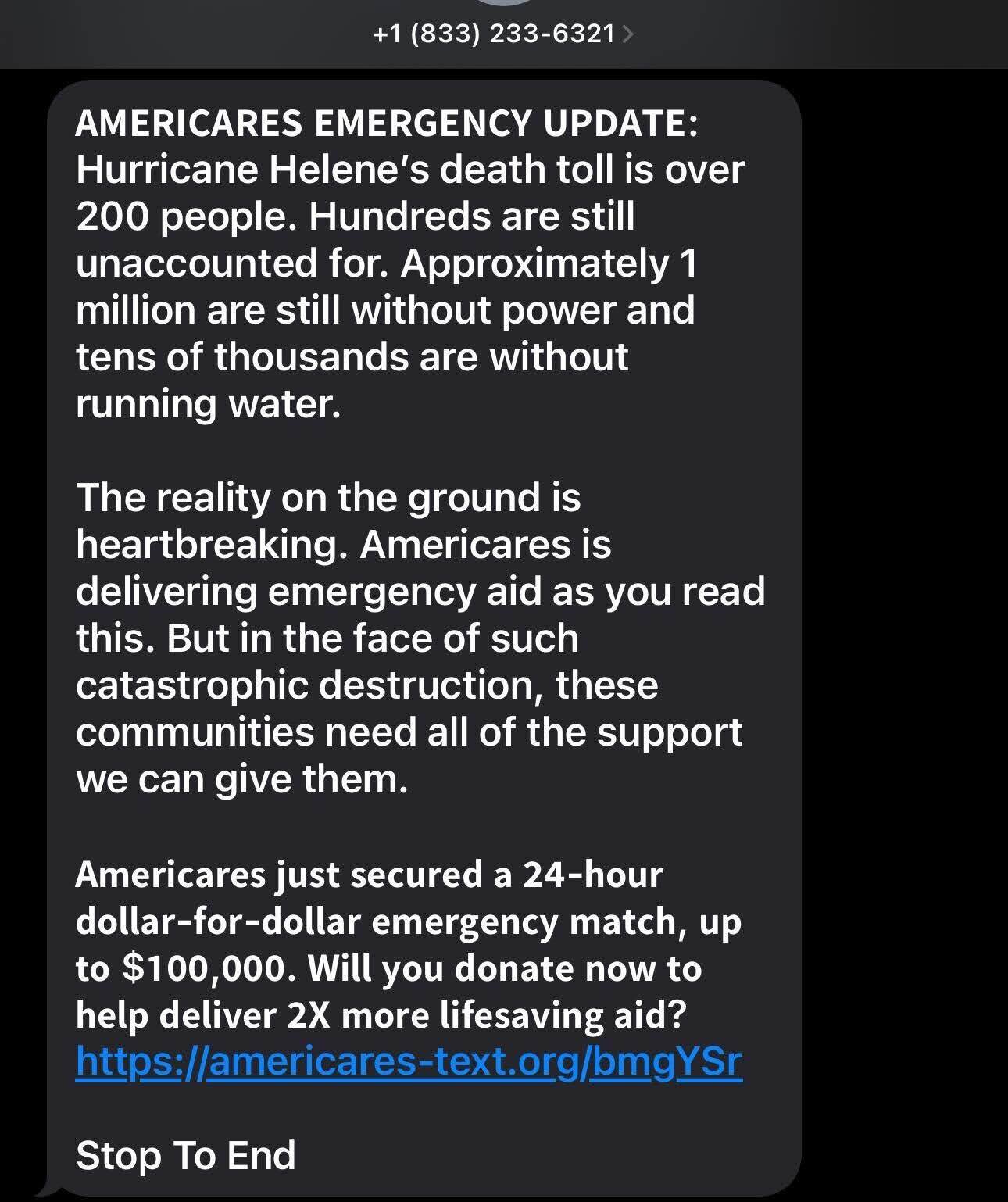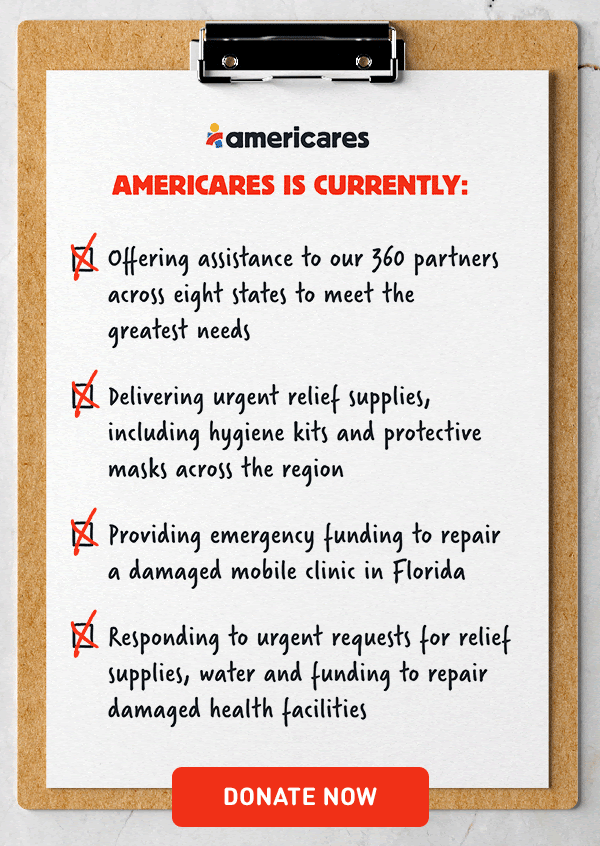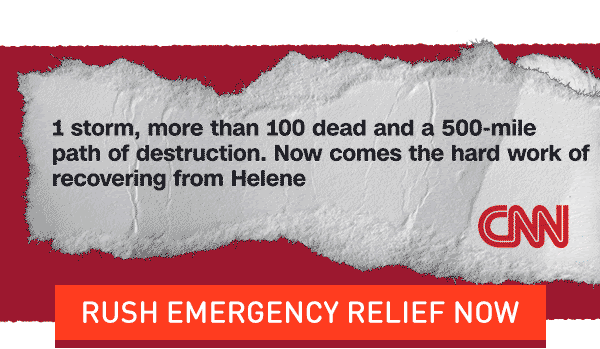Creative and brand strategy, Strategic planning
Maximizing Revenue When Stakes Are High: Rapid Response Strategies
Nonprofit organizations often mobilize in some of the most difficult circumstances to help deliver life-saving relief. And for direct response marketers and fundraisers, these moments are critical to supporting an organization’s mission.
In all our work with nonprofits that respond at a moment’s notice to events around the world, we’ve seen that scaling up in fundraising efforts makes an enormous difference in direct response revenue and growth. At MissionWired, we’ve helped our partners raise millions in rapid response revenue. So I sat down with our experts Duncan Stewart, SVP, and Amanda Pena, VP, to discuss how nonprofits can set themselves up for success in emergency moments.
![]()
Why do you think maximizing rapid response is key?
AP: It’s important to first acknowledge that rapid response moments are usually a devastating event for a community or communities. But for nonprofit organizations, responding to these events is the reality of their work and is often the reason for their mission. Emergencies are a time to connect with donors and supporters to show the real-time impact their work has, building up brand reputation and awareness. It’s also a time to bring in new supporters as people are watching news unfold and are wondering how to help. Acquisition is a big focus for us during these moments.
DS: During rapid response, you have to ensure you’re maximizing revenue quickly. It’s a moment when there’s a clear need for an organization’s work and very little convincing has to happen to mobilize donors. You need to be fast in your response, ensuring that you’re staying relevant and riding the news cycle. It’s okay – and recommended! – that your content changes throughout your response. You don’t need to have all of the information to get something into market. You just want to ensure there’s a way for supporters to give as the news develops.
Amanda, you’ve recently driven impressive results for Project HOPE. How did you do that?
We’ve worked with Project HOPE over the past five years, supporting their paid media and acquisition strategy. So we’ve seen a variety of rapid response moments in our work with them. Our goal in these moments is to increase revenue while also growing their donor files. Earlier this year, in response to the devastating wildfires in Los Angeles, Project HOPE drove a 160% immediate return on ad spend – primarily over search ads – all while adding over 10,000 new donors to their email file. Because we had been continuously optimizing their search program, we could quickly scale up with the right bids. Take a look at how we were able to increase scale and return:

Our design team is incredibly talented and produces really high-quality ads and creative that help our clients, including Project HOPE, drive brand awareness and scale acquisition.



Duncan, in your work with Americares, what has been central to your rapid response strategy?
Americares is often one of the first organizations on the ground after an emergency; their response teams mobilize quickly to save countless lives. Over the last few years, we’ve worked in close partnership with their team to ensure their digital program keeps pace with their response and shares impactful on-the-ground stories. One of the ways we’ve done this is by developing creative toolkits and templates that we can quickly update and launch. This has helped us be among the first in inboxes and feeds – and has helped us drive really impactful revenue.
For example, with the back-to-back hurricanes last fall, we worked with Americares to show the widespread damage and the long road to recovery across digital channels. We started with what we knew at the time in our rapid response templates and then continued to update our content across channels as we learned more. Getting our content quickly was essential and drove an enormous outpouring of response, leading to a record-breaking fall fundraising period.



What advice would you give other nonprofit fundraisers who are honing their response strategy?
AP: I would say to make sure that your acquisition efforts are well-optimized and ready for response at a moment’s notice. This looks like perfecting your CTAs and visuals through iterative testing in non-emergency moments; understanding your audience and how to best reach them; ensuring search is optimized for direct-to-donate; ensuring your pages and flows are set up to acquire new monthly donors; and investing in a variety of acquisition sources like paid media, The Digital Co-Op, peer-to-peer texting, and display.
DS: Work closely with your partners to prepare for these moments ahead of time. This will allow you to have processes and toolkits in place where you know who to call and in what order when a crisis strikes. With that working relationship established, you’ll be able to move quickly in your fundraising efforts, which is so key. It’s also important to know what creative resonates with your donors and prospective donors and to test it outside of emergency moments. Developing compelling content that cuts through the noise will help your organization stand out in a flurry of news and other organization responses.
![]()
While our world is tough to predict, there’s one thing that’s almost certainly true: Your organization’s mission will be called on to respond in these difficult moments. To read what else we’ve shared on rapid response fundraising, check out our Guide to Rapid Response. And if your organization wants to talk response planning, don’t hesitate to reach out at [email protected].
Next insight


